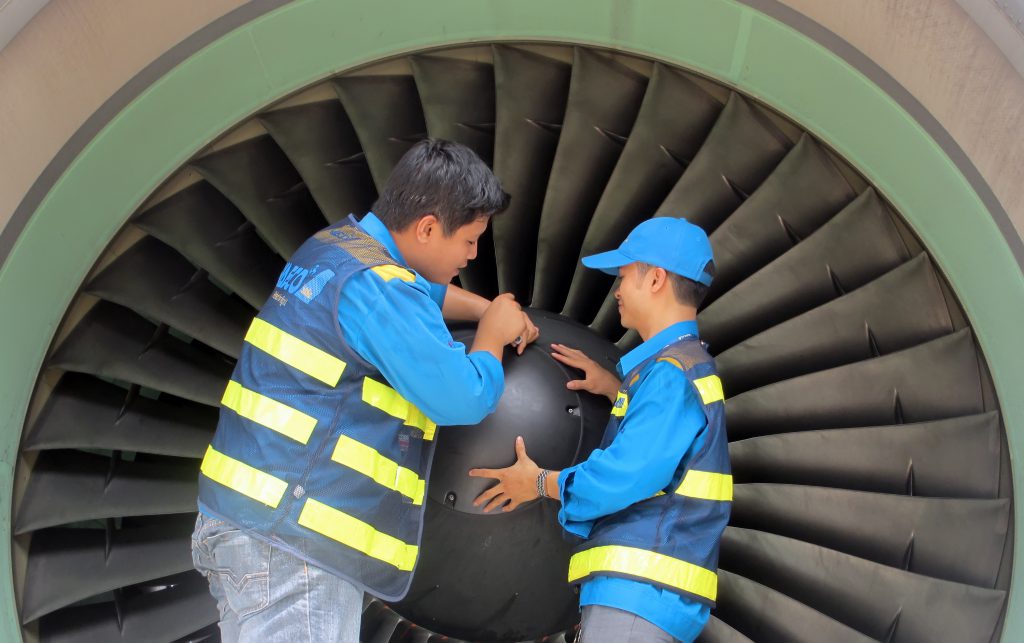Vietnam Airlines CEO, Mr. Le Hong Ha, acknowledges: “Tens of millions of people are placing their trust, and even their lives, in the hands of Vietnam Airlines.”

According to Mr. Ha, many incidents threatening air safety worldwide are due to insufficient awareness and knowledge about aviation safety. An employee’s lapse of attention can have severe consequences. Therefore, building and developing a Safety Culture is the foundation for the sustainable development of the aviation industry.
“Building a Safety Culture is not an achievement that yields immediate results,” says Mr. Ha. “It is a process of persistent and continuous construction, combining multiple measures simultaneously to change each individual’s perception, views, and actions.”
In fact, Vietnam Airlines has been diligently building this culture for many years.
Pioneering steps
Throughout its 30-year development journey, Vietnam Airlines has ceaselessly invested in perfecting both its human resources and modern technical infrastructure. Vietnam Airlines was the first Vietnamese airline to be granted the Operational Safety Audit (IOSA) certificate by the International Air Transport Association (IATA) in 2006. The airline successfully built a Safety Management System (SMS) from 2007 onwards, meeting international safety standards and being approved by the Civil Aviation Authority of Vietnam as a model for other domestic aviation units to develop and perfect their safety documentation.
Vietnam Airlines is leading the way in investing and operating a fleet of new-generation aircraft equipped with modern technologies, such as the Boeing 787, Airbus A350, and Airbus A321neo. At the same time, it actively promotes the application of advanced technology to enhance safety and operational efficiency. The airline became the first in the world to successfully put two of the most modern wide-body aircraft types – the Boeing 787 and Airbus A350 – into simultaneous operation.
The airline’s entire fleet is always maintained under 24/7 real-time technical control using remote monitoring technologies such as the AHM (Aircraft Health Monitoring) system for tracking the status of Boeing aircraft; the AIRMAN (Aircraft Maintenance Analysis) system for monitoring the condition of Airbus aircraft; the ADEM (Advanced Diagnostic and Engine Management) system for monitoring the status of aircraft engines; and the SKYWISE application (for storing, managing, and analyzing aircraft operation and maintenance data). This allows for proactive analysis, evaluation, and handling of potential malfunctions, ensuring absolute safety for all flights. Thanks to these measures, the safety indicators of the airline are constantly improving, and the operational reliability ratio of the fleet is always among the top in the world.

Proactively building a Safety Culture
Every year, Vietnam Airlines regularly organizes internal training courses on safety and safety culture for thousands of members to study the latest regulations and guidelines of the International Civil Aviation Organization (ICAO), the safety management system of the Civil Aviation Authority of Vietnam (CAAV), and the safety culture development policy of Vietnam Airlines.
In addition, the airline strengthens discipline and order in its operations and successfully builds a reporting culture. The reporting culture model has been enthusiastically embraced, with an increasing number of voluntary safety reports in addition to mandatory reports from flight operation units, technical departments, and ground operations.
A highlight of Vietnam Airlines’ safety culture is its emphasis on honesty and transparency, creating a working environment where all employees are always ready to report errors. Any employee who proactively and honestly reports incidents that affect safety or mistakes caused by negligence will not face disciplinary measures. As a result, the airline has built a safety data system to predict, quickly identify, promptly respond to, and prevent risks, with the ultimate goal of ensuring absolute safety on all flights.
Elevating Safety Culture to new heights
Currently, the Safety Culture of Vietnam Airlines has achieved a high “Proactive” rating level across all aspects, including safety reporting, safety investigation, handling of safety information, and safety prevention. By 2025, the airline aims to elevate its Safety Culture to the highest, advanced level rating – “Generative”. To achieve this goal, Vietnam Airlines focuses on five foundational pillars of development: Just Culture, Learning Culture, Reporting Culture, Informed Culture, and Flexible Culture. Simultaneously, it builds upon six pillars: Digital Transformation in Safety, Safety Communication, Safety Management System (SMS) Training and Education; Risk Management; Evaluation of SMS and Risk Management; Safety Culture Survey; and Knowledge Transfer.
Vietnam Airlines’ efforts have been highly recognized, yielding an IATA Operational Safety Audit (IOSA) certificate. Vietnam Airlines has had this IOSA certification consistently renewed for the 10th consecutive time.
Furthermore, the reputable website AirlineRatings, which specializes in evaluating the safety level and service quality of global airlines, rated Vietnam Airlines among the Top 20 airlines worldwide for safety and service quality in 2023.
Outstanding safety milestones
– 2006: Joined the IATA and obtained the Operational Safety Audit (IOSA) certificate, which has been consistently renewed since then.
– 2007: Became the first Vietnamese airline to build a Safety Management System (SMS) that meets international standards.
– 2010: Joined SkyTeam – the only global airline alliance with a Safety Committee that applies the world’s leading standards.
– 2015: Became the first airline in the world to successfully operate both Boeing 787 and Airbus A350 wide-body aircraft at the same time.
– 2020: Achieved a Proactive score of 4.0 in Safety Culture.
– 2021: Became the first and only Vietnamese airline to open a regular direct route between Vietnam and the United States, meeting the strictest standards in the world.
– 2022: Received permission for Extended Diversion Time Operations (EDTO) of 207 minutes for the Boeing 787 fleet and 240 minutes for the Airbus A350 fleet.
– 2023: Was honored among the Top 20 Best Airlines Worldwide for Safety and Service Quality by AirlineRatings.










